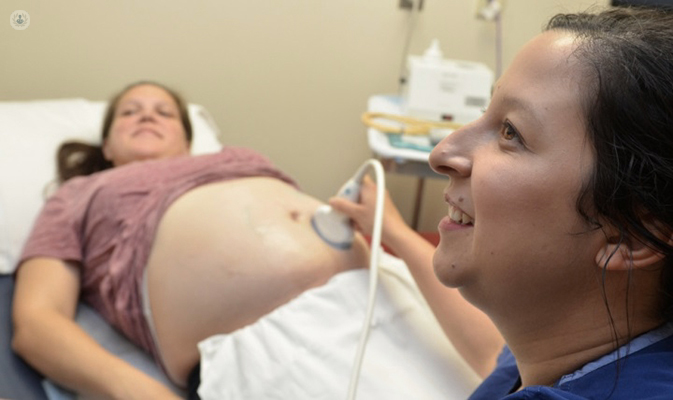


What is prenatal diagnosis?
Prenatal diagnosis is a set of tests that are carried out during pregnancy and allow us to monitor the formation and development of the foetus.
There are different techniques, both invasive and non-invasive. Some of the tests are commonly performed on all women, while others are performed depending on the state and development of the mother and foetus.
What does prenatal diagnosis involve?
In prenatal diagnosis, the gynaecologist will ask the mother several questions and review her medical history and family history, which may influence her health during pregnancy.
To control the health and development of the mother and the foetus, different clinical tests and diagnostic imaging tests will be performed. The main tests are:
- Test of foetal DNA in maternal blood – from week 10, you can know the risk of the baby having Down syndrome or other abnormalities related to the chromosomes.
- Ultrasound – several of these scans are performed throughout pregnancy. It allows the shape of the developing foetus to be seen, and may reveal health problems before the baby is born.
- Amniocentesis – the doctor takes a sample of the amniotic fluid that surrounds the foetus to detect chromosomal abnormalities.
Why is it done?
The objective of prenatal diagnosis is to monitor the development of the foetus, as well as to detect and prevent possible diseases and deformities. Thanks to prenatal diagnosis tests and reviews, parents can anticipate what their baby's state of health will be like before birth.
How does it feel during the exam?
Most tests to be performed during prenatal diagnosis are imaging tests such as ultrasound, which are painless. The tests are designed not to cause side effects or discomfort in the mother. In addition, it is a series of procedures that allow parents to know in depth the growth process of their future baby.
Meaning of abnormal results
If any of the tests of the prenatal diagnosis provides abnormal results, it may be because the foetus is not developing correctly and may have some disease or deformity. In case any test indicates a risk of anomaly, more tests will be performed to rule out or confirm the problem and, if possible, prevent it.
